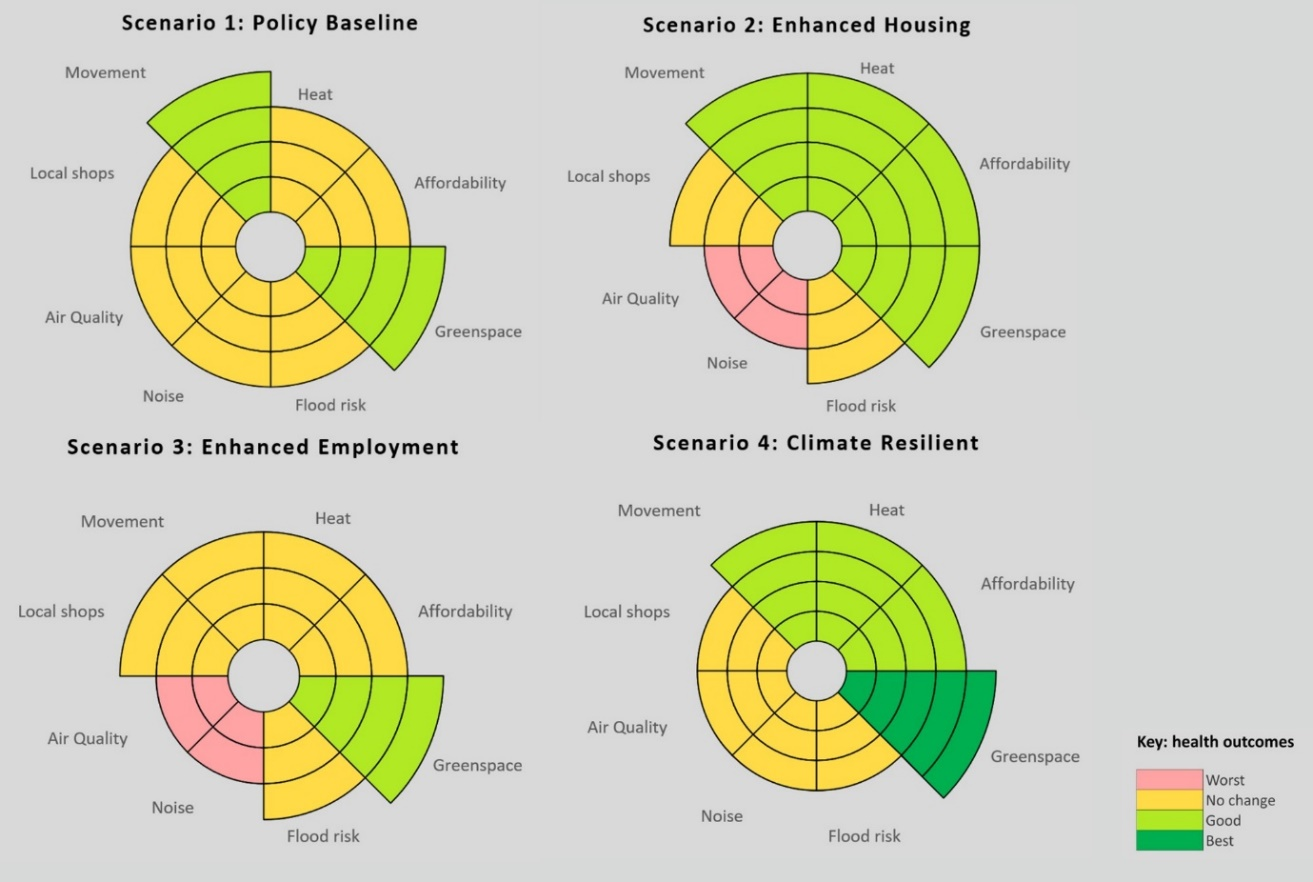City Know-hows

Health evidence could be used more effectively to influence healthier urban development. We learn from a researcher-practitioner collaboration, involving an embedded researcher in local government working on a regeneration project, which helped to develop a new health modelling tool for environmental change and influence decision-making.
Share
Target audience
Urban development practitioners, academic funders for health and planning
The problem
Health evidence doesn’t effectively influence urban development decision-making. Although there is evidence showing how environmental features can influence health risks, urban development too often results in unhealthy environments.
What we did and why
We used an embedded researcher to collaborate with practitioners on a regeneration project who bridged between academics and practitioners to provide contextually relevant health evidence to influence the development of a regeneration spatial framework. This helped develop a new health modelling tool demonstrating impacts of health from environmental change.
Our study’s contribution
We demonstrate the value of showing contextually relevant health evidence to influence urban development decision-making. Health evidence was used to: highlight problems; support good/aspirational solutions; and consider trade-offs in a complex system. This should be recognised to ensure evidence is appropriate for different purposes.
Embedded research is an emerging approach and this study demonstrates its value to support researcher-practitioner collaborations to understand a complex system and develop impactful, timely interventions for healthier place-making.
Summary briefing notes about this study: Using-health-evidence-to-influence-urban-regeneration-in-Bristol-1.pdf
Summary briefing note about the HAUS modelling tool: Valuing-the-external-social-costs-of-unhealthy-urban-developments-1.pdf
TRUUD study. Research about healthy urban development, which this study was part of: https://truud.ac.uk/
Impacts for city policy and practice
A new health modelling tool was piloted in this study. The academic-practitioner partnership helped academics understand a complex system and provided contextually relevant evidence for practitioners to: highlight problems; support good/aspirational solutions; and consider trade-offs.
It shows its value to demonstrate contextually relevant health evidence to influence healthier urban development. More collaborations between public health and urban development sectors could improve the influence of health evidence on urban development decision-making.
Further information
Full research article:
 Using health evidence to influence healthier urban development: A qualitative evaluation of a researcher–practitioner collaboration by Anna Le Gouais, Eleanor Eaton, Katharine Hanss, and Judi Kidger
Using health evidence to influence healthier urban development: A qualitative evaluation of a researcher–practitioner collaboration by Anna Le Gouais, Eleanor Eaton, Katharine Hanss, and Judi Kidger
Related posts

With so many different forms of guidance available for incorporating health into planning, our study evaluated what makes a healthy planning framework successful.

New analysis methods were assessed. The majority of audit tool items showed moderate/almost perfect reliability. The desktop method was a valid alternative to on-site auditing, truncated but more time-efficient and economical.

Emergencies can become transformative experiences for cities: an opportunity to rethink, replan and rebuild, and to push for changes that can make them more healthy, sustainable, equitable and resilient. We interviewed 12 cities on their practical experiences with local emergencies and disasters, identifying common challenges and lessons learned for the future.